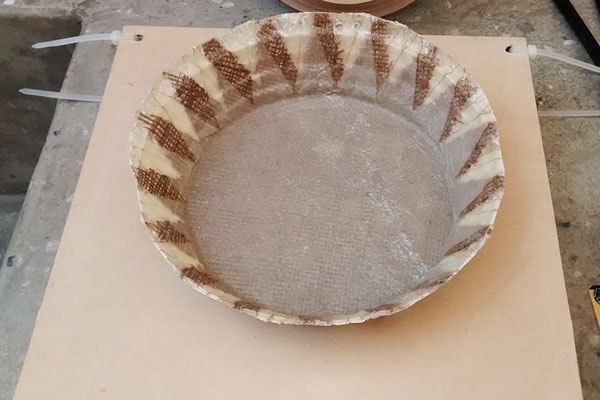Assignment 14
composites
Have you:
- read the material safety data sheet (MSDS)and technical data sheet (TDS) for the resins that you're using
- design and fabricate a 3D mold (~ft2) and produce a fiber composite part in it
For this homework, We review the technical specifications of the resin POK BAK.
The kit consists of two parts: The resin and the catalyst, the mixing ratio is 1 to 5.
The instructions mention first mixing the resin 2 minutes alone and then adding the catalyst. Mix the two parts for 5 minutes and finally let stand 2 minutes. From that moment you have up to 60 minutes to work the mix without problems.
The warehouse of the resin should be done at less than 40 degrees, otherwise heat it a little before use.
For more technical information, you can consult:

The day of the presentations of this task, Eddy showed his mask and Neil suggested to do tests with different methods to control the excess of resin and become more smooth.
We decided to do the tests in group, I could not be in the moment that carried out the process but I could observe the results.
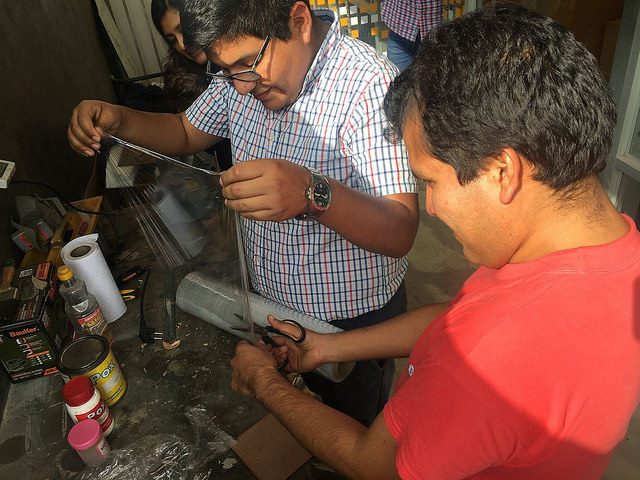
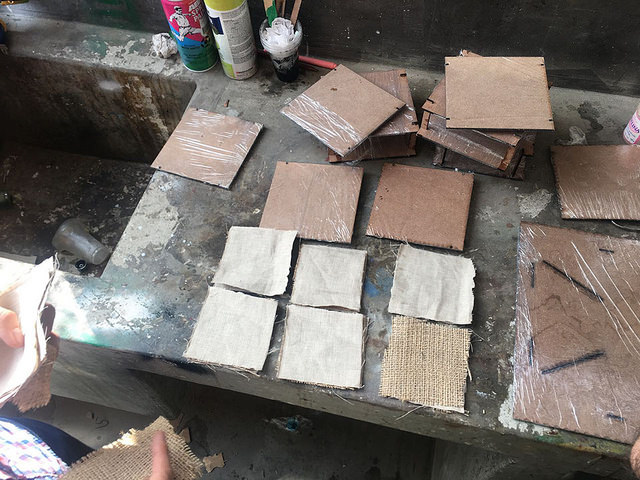
The tests were made with two types of materials: Yute and Lino; and these will be of three techniques:
1. Press as much as possible with your hands the material thus removing excess resin
In this case the result (2 days later) is that the texture is not flat and non flexible.
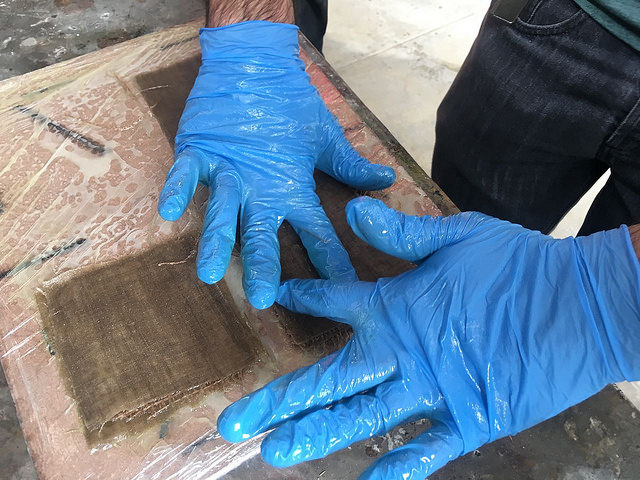
2. Make a sandwich of MDF and use mechanical presses to press the materials.
In this case the result (2 days later) is that the texture is flat, has not excess resin and is flexible and compact
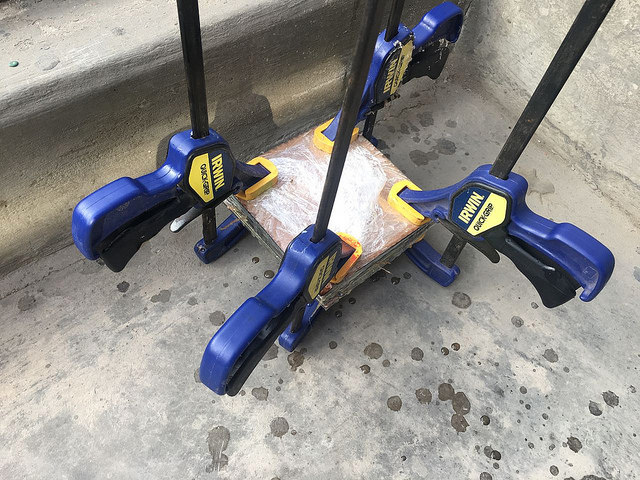
3. Make a structure of mdf that carries inside the Yute or Lino and in is compressed inside a special plastic that clean and compress the air.
In this case the result (2 days later) is that the texture is not flat and less flexible.
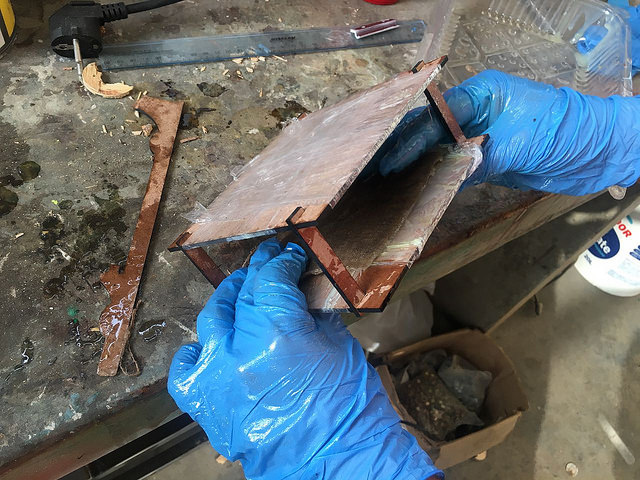
The best resulrt are the technique 2.
For my individual homework, I wanted to do something round like a ball to see how it was.
I design a round structure, so that it is easy to break at the end of the assigment and can be removed
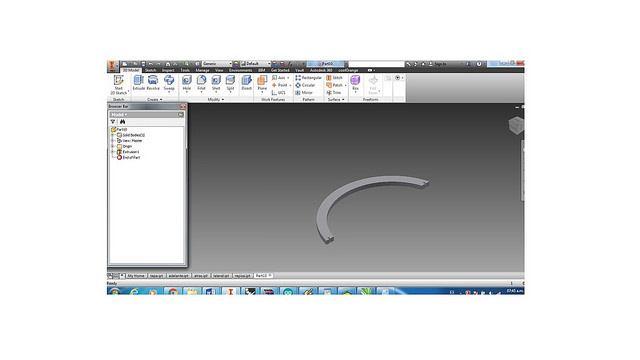
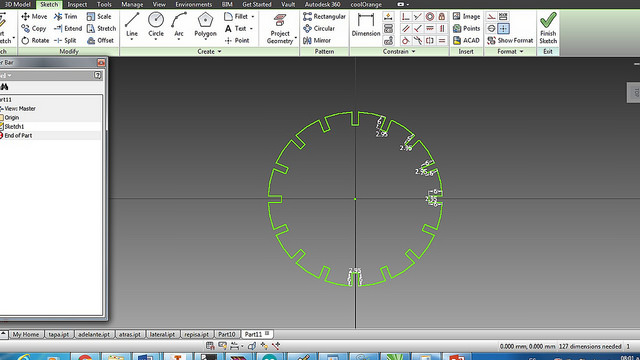
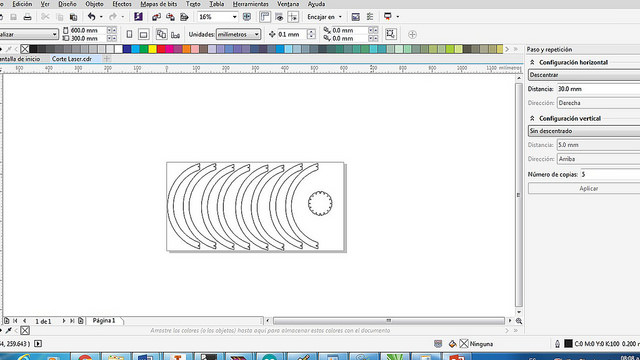

Then, I assemble the pieces with the prefits you had

For the composite process I gathered the following materials:
- Nitril Gloves
- Stretch Film
- Resin (Part A and B)
- A box for mix
- Vaseline
- Red Lino
- A mask

Additionally, prepare several pieces of lino to cover the ball, otherwise it can not be given the shape
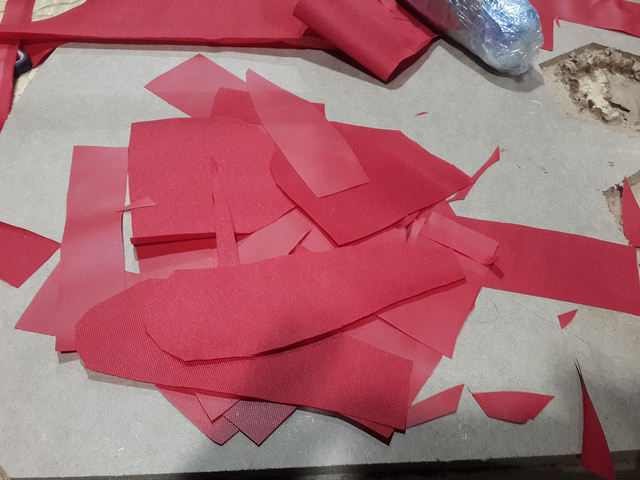
First, Wrap structure in stretch film with enough pressure, spread Vaseline the entire structure and prepare the resin mixture

Then, we glue the pieces of lino one by one to the structure wetting them with the resin.
Before closing the whole contour we leave an opening to remove the structure.

Finally we removed the structure and patched the gap.
We can conclude that with the technique we use we did not stay as we expected and this can be due to the material we used, which was laminated linen and that we cut very large pieces.

CONCLUSIONS : This week was not very successful, but when doing the tests in group I realized that maybe the type of Linen I used was also not the right one and the method I use for Composite as well.
So I decided to do another test and as they did not have foam in the Fab Lab I decided to make a 3d block with the Shopbot milling machine, joining block with block to increase the height of the solid.
I also could not use the vacuum packaging because it was not available at that time, so I decided to use the second method of pressing to see what results I obtained and then buy the special plastic to perform the test in the void.
I designed a mold composed of five layers of concentric circles, one larger than the other. This provides a stepped mold that simulates the shape of a basket. Each layer would have a thickness of 9 mm, which was the thickness of the MDF that it would use. However, it could use a thinner material, thus requiring a greater number of layers to achieve the desired height, and obtaining a less stepped mold.
According to Week 7, I exported in DXF the design and bring it to VCarve for cut it in the ShopBot.
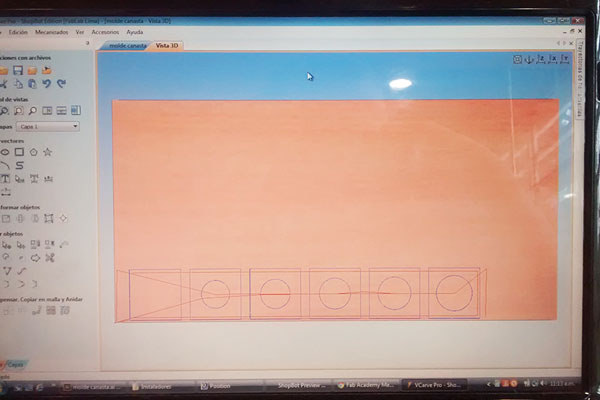
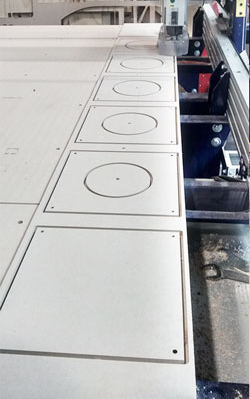
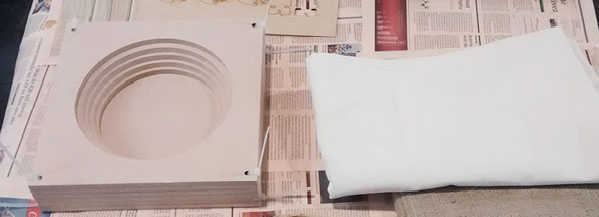
Then one of my colleagues suggested that I use Linen and Jute without plasticizing and preferably cut them to size and ready to be placed. It was a good idea and I also learned the cutting parameters for these types of cloth.
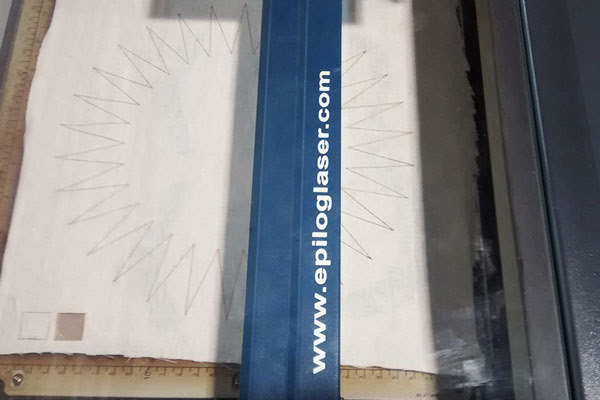
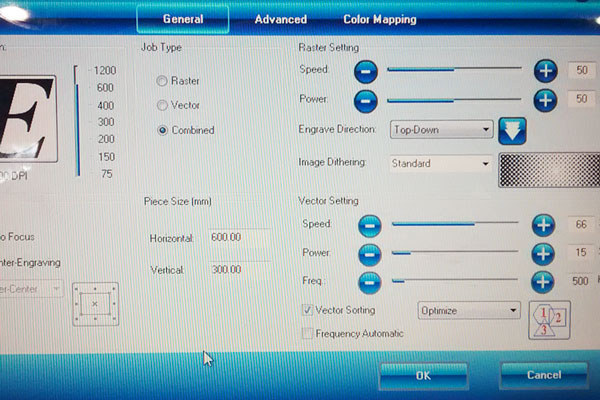
I spread the mold with Vaseline and then covered with plastic wrap. This process is very important to unmold the final piece. If you're not careful it will be almost impossible to remove the epoxy resin once this is solid.
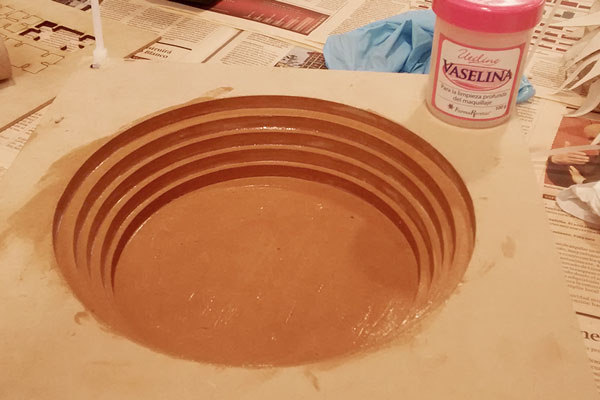
First I put a layer of jute and dipped with resin. Then place a layer of jute. Between each layer I was casting resin and verifying that the fabrics are well moistened with it.
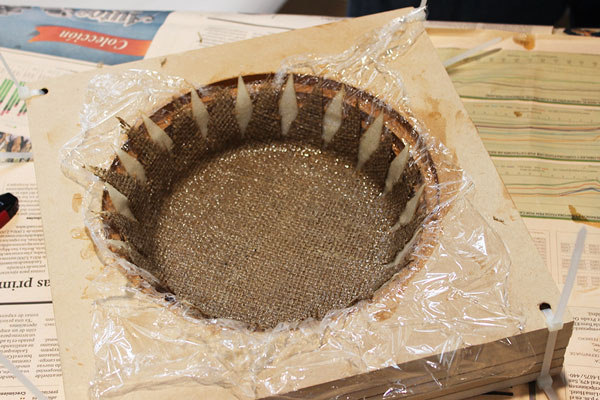
Finally I covered everything with a layer of plastic wrap.
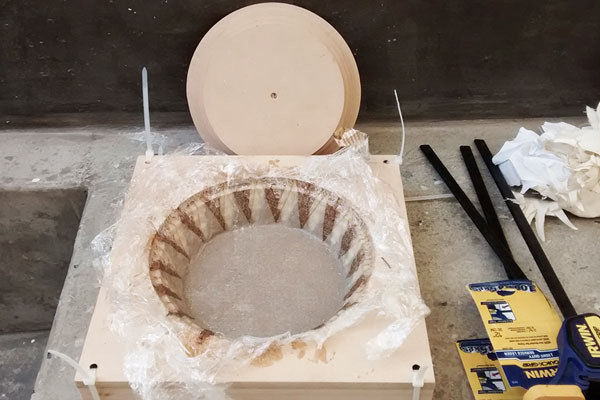
I closed the mold with the "top" and a press to give a good way. For me, this is the best technique for Composites.
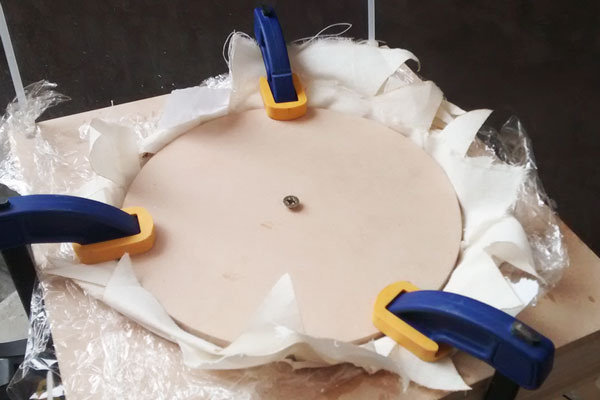
After 12 hours, the result was better than I expected and I have the doubt that there will be differences in the technique of empty packaging.
